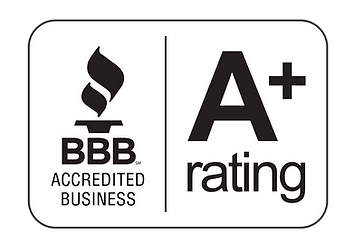WORKERS COMP STRUCTURED SETTLEMENTS
We help you settle workers' compensation claims, from the simple to the complex
Workers Compensation Structured Settlements
What is Workers Compensation?
Workers Compensation is a form of insurance providing wage replacement and medical benefits to employees injured in the course of employment in exchange for mandatory relinquishment of the employee's right to sue their employer for the tort of negligence- Wikipedia
New York Section 32 Waiver Agreements
A Section 32 Waiver Agreement are a negotiated agreement between the injured worker and the insurance carrier to settle indemnity and/or medical benefits on a claim. A waiver agreement ends the right of an injured worker to ongoing and future benefits in exchange for a lump sum payment or an annuity.
Benefits of Workers Compensation Structured Settlements
Payments can be customized .
There are different
types of payment streams that can be tailored and combined to meet a workers' compensation claimant's current and future needs
Stable income .
Structured settlements offer protection against future loss or dissipation of funds. Workers compensation structured settlement payments are very difficult, if not impossible to sell to factoring companies in most states. Workers comp claimants don’t have to be concerned with making a single payment last a lifetime.
Tax benefits Per IRC 104(a)(1), gross income does not include "amounts received under workmen’s compensation acts as compensation for personal injuries or sickness. There are also
exemptions at state level, except for punitive damages. In contrast, investment earnings from lump sum all cash settlements are generally taxable.
Capital protection: Unlike traditional investments where as Covid-19 has shown, one can lose money with the wild fluctuation of financial markets and wipe out years of gains, structured settlements provide protection from economic uncertainty in an unpredictable economy. Structured settlements are funded with annuities from major life insurance companies that are subject Risk Based Capital standards, or U.S. Treasury obligations.
Low risk :
Going to trial involves significant risks to all parties involved, and the time and expense of litigation can be a significant burden. Structured settlements allow the parties to author their own futures without the unpredictability of a trial.
Professional money management :
Each highly-rated financial institution has a team of professionals to manage the assets in a structured settlement.
No fees: There are no ongoing fees for administration, management or transactions, and no fees for the consultation of structured settlement experts
Lower the Cost of Medicare Set Aside: A Structured MSA saves over the cost of a cash MSA.
We help you settle workers' compensation claims, from the simple to the complex
The basic premise of this approach is taking an existing statutory benefit and funding it with a structured settlement annuity or using a periodic payment reinsurance contract, at less than the cost of the current reserve, with a concomitant reduction in balance sheet liability. It is an alternative to an all cash settlement under a Compromise and Release (C&R)
Furthermore, where it is not possible to settle a worker’s compensation claim, a state fund, pool, casualty company or self-insured can simply purchase an annuity or reinsurance to fund the long term indemnity payments. Structured settlement annuities and reinsurance are able to match the payment streams required by state statutes. This usually avoids the need for special regulatory approvals to change the payment pattern.
In some cases, medicals may also be funded in this manner, particularly in conjunction with a Medicare Set Aside where a Structured MSA may reduce the cost of the MSA.
What types are claims are best for a workers compensation structured settlement approach?
- Questions concerning compensability and liability have been determined.
- The claimant has stabilized medically and degree of disability and/or permanency can be accurately determined.
- There is a high probability that payments will continue at least 10 years into the future.
- Where the claimant is receiving Medicare, is on Social Security Disability, or is applying for Social Security Disability.
Within these broad categories consider the following types of cases as good examples
- Permanent and total disability
- Worker Death cases
- Workers Comp claims where there is claim for a wage differential
- Brain/brain stem injuries
- Spinal cord injuries
- Amputations
- Severe burns
- Multiple trauma claims
- Loss of vision or hearing
- Occupational lung diseases (e.g. Black lung-coal workers)
How Do Structured Settlements Help Self-Insured Employers and Workers Compensation Insurers?
1.
Mortality risk is transferred to a life insurer. Writing structured settlement annuities on a life contingent basis can eliminate reserve deficiencies arising from poor mortality forecasts.
A life insurer’s actual mortality experience tends to be more predictable due to a large pool of risks. However, reserve adjustments related to medical expenses and other factors may still be necessary. To the extent annuity financing reduces adverse reserve development it will also stabilize future earnings.
Mortality Based Discounts(MBD’s) are applied when, in the underwriters determination, an individual’s life expectancy is shorter due to a disclosed medical condition. Of significant interest is that a ratable condition need not be related to the claim being filed. A rated age will significantly bring down the cost of a life contingent payment stream. The use of rated ages and mortality data is a major advantage in reducing the cost of Workers' Comp Medicare Set Aside Arrangements (WCMSA) . IMPORTANT TIP! Both industrial and non-industrial medical conditions that may reduce the applicant’s life expectancy in the view of the life insurance company that provides the annuities for the workers compensation structured settlement. This may reduce the cost of the Medicare Set Aside Allocation making it easier for a case to settle.
2. Investment and reinvestment risk is transferred to a life insurer . In a sense, all non-fatality worker’s compensation claims can be divided into two groups. Short-term claims constitute the largest group in terms of numbers of cases and represent a significant portion of claim debts. These short-term liabilities match up nicely with the short duration assets of the typical casualty company or pool.
The next group of claims is made up of long-term claims. These long-term liabilities are not well matched with the short duration assets of the typical casualty company or pool portfolio. Purchasing annuities or using periodic payment reinnsurance to fund these long-term claims provides a better matching of assets and liabilities. This is a cost effective strategy since the Capital requirements and long-term investment strategies of life companies allow them to price annuities competitively compared to assets of similar quality and duration.
3. Administrative expenses can be decreased through the structured annuity or reinsurance financing mechanism . Payments can be made directly to the claimant by the life insurer or reinsurer, relieving the obligor of this burden. Some annuity issuers and reinsurers can make payments on a weekly or bi-weekly basis.
4. Compromise Settlements and Redemptions
- Qualified assignments under IRC Section 130 have been permitted for compromise settlements and redemptions, since August 5, 1997, under the Tax Payer Relief Act of 1997. Qualified assignments may provide additional financial security to the payee, particularly if the structured settlement annuity issuer is of greater credit quality than a self insured employer or workers compensation insurer..
- Non qualified assignments or reinsurance structured settlements can be used where there is a pre-August 5, 1997 workers compensation settlement.
- Several others provide a reinsurance approach to finance both statutory obligations and compromise settlements.
- Several companies have created special endorsements that provide for the commutation of the funding asset upon the cessation of the statutory obligation. (e.g. remarriage of a widow or widower)
How Do We Begin?
Following is a brief checklist of the items needed to underwrite and price an individual or group workers compensation transfer utilizing the approaches covered above .
- Name of Claimant and Social Security Number
- Date of Birth
- Sex
- Type of Injury
- Date of Accident
- Monthly or Bi-Weekly Payment desired?
- Annual Medical Costs, if any
- Applicable State COLA, if any
- Current Reserve Amounts by claimant
For cases where a life contingent cash flow is required, current medical records or an Independent Medical Evaluation(IME) will be required to be eligible for the Mortality Based Discount (MBD)
Last updated April 22, 2023
#Section32WorkersCompsettlement #NYworkerscompstructuredsettlement
4structures.com, LLC
The Structured Settlements and Settlement Planning Company
43 Harbor Drive, #309 Stamford, CT 06902 USA
888-325-8640
646-849-1588
New York City (Manhattan, Bronx, Brooklyn, Queens, Staten Island), Westchester(NY), Nassau County (NY) , Suffolk County on Long Island (NY), Albany County (NY), Oswego County (NY), Steuben County (NY), Broome County (NY), Onondaga County (NY), Fairfield County (CT), New Haven County (CT), Hartford County (CT) New London County (CT), Tolland County (CT), Litchfield (CT), Middlesex (CT) , Bergen County (NJ), Middlesex County (NJ), Ocean County (NJ)
Structured Settlement Experts and Settlement Planning Consultants for settlements from claims or lawsuits arising out of Aviation accidents, Medical Malpractice, settlements involving Serious Personal Injury, Wrongful Death, Wrongful Incarceration, Employment, Civil Rights, Discrimination of any type, Auto accidents, Motorcycle accidents, Maritime accidents, Workers' Compensation, Product Liability, Real Estate Liability, Construction Defect claims or lawsuits, Landlord/Tenant,
Property, Attorney Fee Deferrals, Funding Agreements, Structured Installment Sales, Environmental Liability and Commercial Dispute settlements.
Structured settlements and structured settlement brokerage, settlement planning, Sudden Money®, financial transitionist, funding agreements and insurance related services provided by 4structures.com LLC.
Financial Advisory Services provided through Groove Financial Advisors , LLC, and its service partners.
Fiduciary services, including the custody and administration of trusts provided via service partners.
Securities and Insurance Products are NOT Insured by the FDIC, nor by any other Federal or State Government Agency, are NOT a Deposit of and are NOT Guaranteed by a Bank or any Bank Affiliate, and securities MAY lose value.
4structures (USPTO Reg. 4640532) , 4structures.com (USPTO Reg. 4640531) , We Know Structured Settlements (USPTO Reg. 3089738),
Because Certain Sells (USPTO Reg. 6237309) and We Know Structured Sales (USPTO Reg. 3490489), are Registered Trademarks of 4structures.com LLC.
John Darer is a Registered Trademark of John Darer (USPTO Reg. 4674907)
John Darer California insurance license 0761076
4structures.com LLC CA license OF19785 d/b/a 4structures Settlement Insurance Agency






